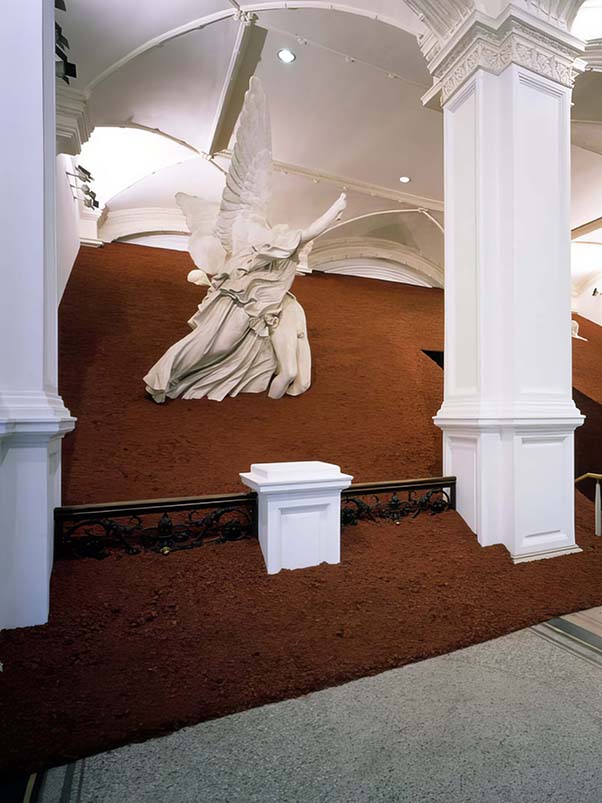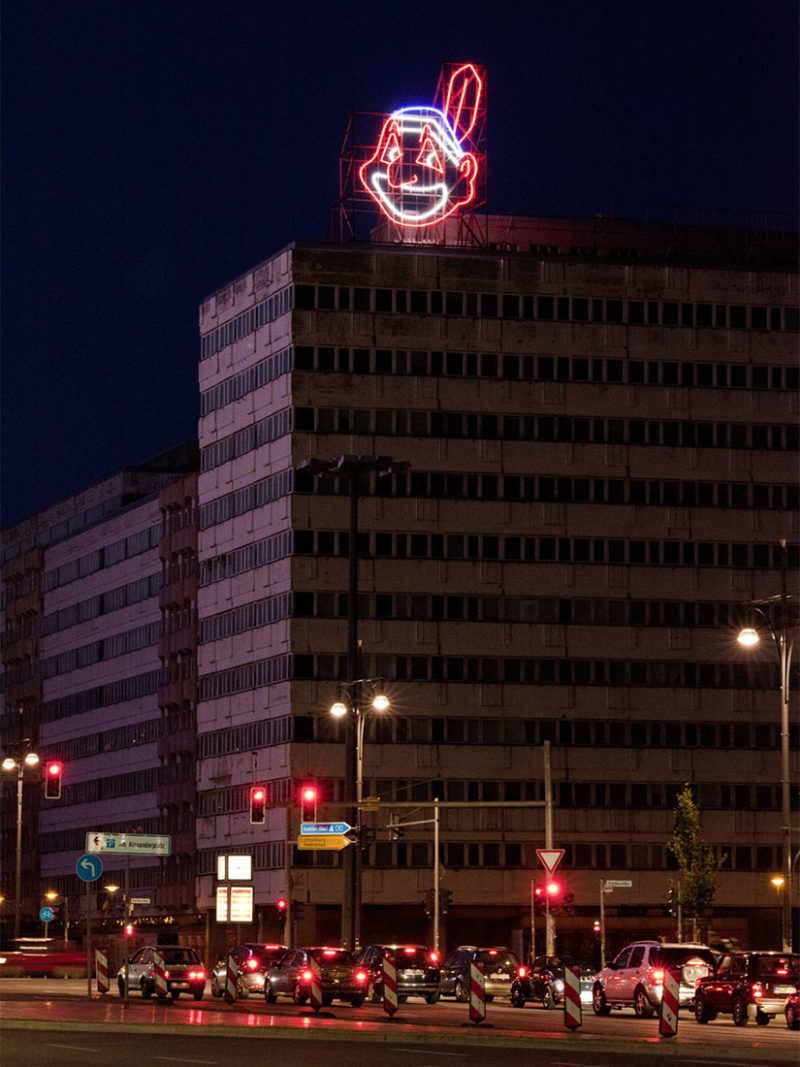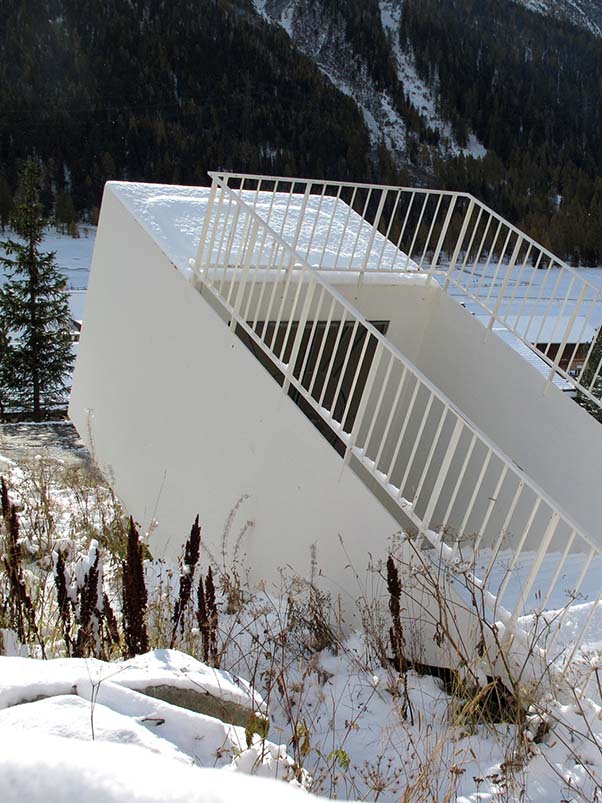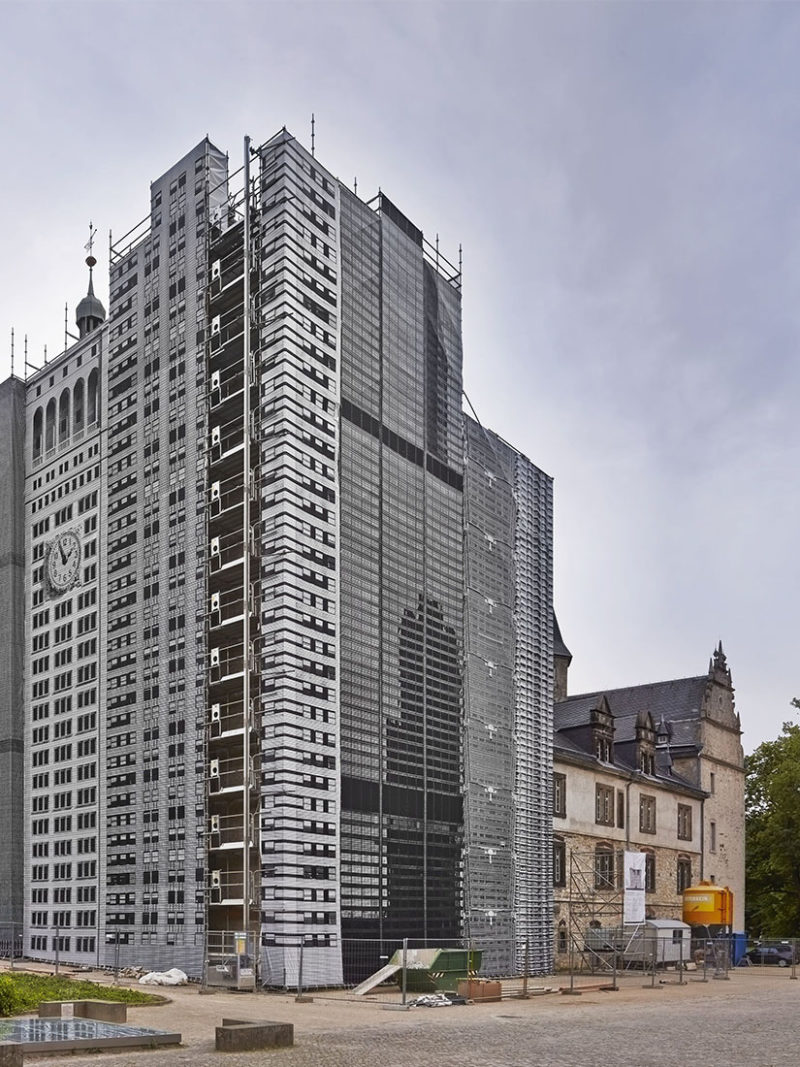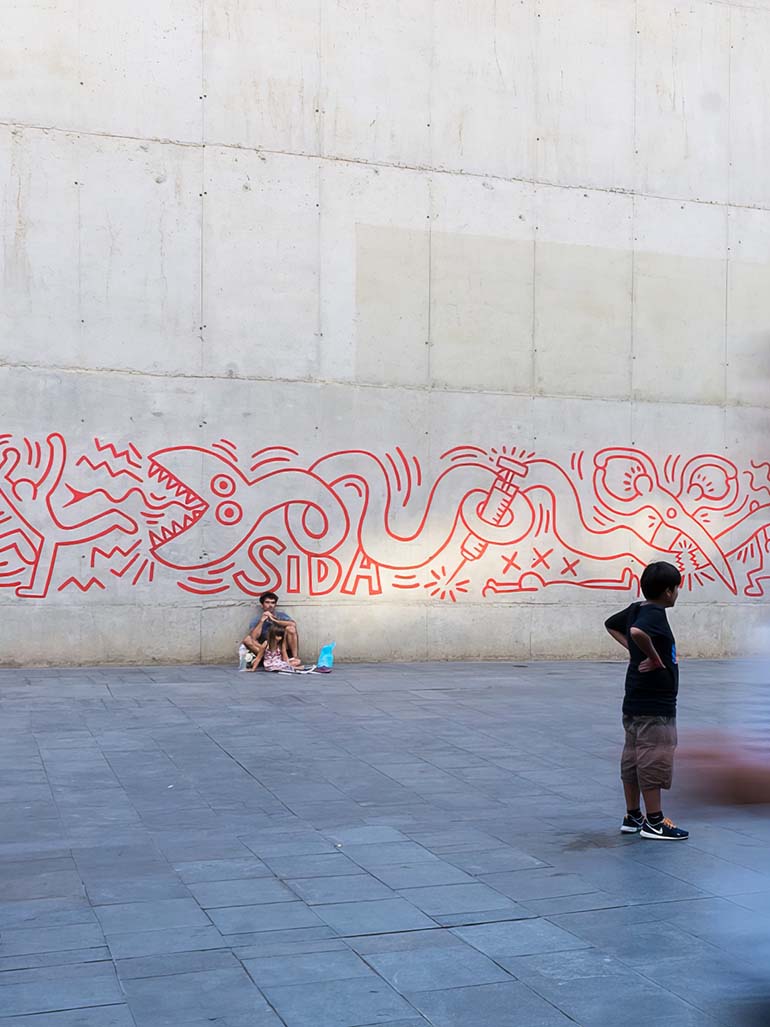Embed from Getty Images 1window.gie=window.gie||function(c){(gie.q=gie.q||[]).push(c)};gie(function(){gie.widgets.load({id:’UU2w1ezBSzF-0xfANd44Xw’,sig:’vH7I_F4aOzxiZCfa9TM_46EP8aZXEjChOkaOS_W5KrY=’,w:’594px’,h:’395px’,items:’949885624′,caption: true ,tld:’de’,is360: false })});
Introduction
As an outspoken social rights activist, Keith Haring was not one to shy away from controversy 2. His Berlin Wall Mural is just that – controversial and provocative. In fact, Haring himself told The New York Times 34 that the mural was a “subversive” act that was meant to make a political statement, and help on a psychological level destroy the Berlin Wall.
Embed from Getty Images 5window.gie=window.gie||function(c){(gie.q=gie.q||[]).push(c)};gie(function(){gie.widgets.load({id:’f2Ce08z9QZlptIk7UE1itw’,sig:’JSno5xAUVSolqZBM-XTS8ZlZVrtZg23CB0gL-wTzcBc=’,w:’594px’,h:’394px’,items:’949885724′,caption: true ,tld:’de’,is360: false })});
Mesmerizing, conspicuous and intriguing, the Berlin Wall Mural was a masterpiece that helped put both street art and Keith Haring on the map. It took Haring about 6 hours to complete painting the mural over a yellow background a team had applied the previous day. The mural itself was commissioned by Checkpoint Charlie 67 Museum’s director, Rainer Hildebrandt.
Embed from Getty Images 8window.gie=window.gie||function(c){(gie.q=gie.q||[]).push(c)};gie(function(){gie.widgets.load({id:’9XGeZBG3S_5K6SuA_uC_iQ’,sig:’YhSkLtCk4_kz5xJBRUYAsxzTd7rmpLWx1FZM6-ljsWY=’,w:’396px’,h:’594px’,items:’949885740′,caption: true ,tld:’de’,is360: false })});
Berlin Wall Mural, 1986
Keith Haring’s Berlin Wall 9 Mural spread over across a 300m long portion of the 100-mile Berlin Wall 1011 (the ‘Berliner Mauer’). The project was highly publicized and equally risky for Haring. The mural was composed of human figures who were interlinked at their feet and their hands. Of course, the interconnected human symbols were designed to signify the quest for unity of people, as opposed to the idea of constructing such an obtrusive wall. Haring’s choice of colors matched those found in the German flag: yellow (representing gold), red and black.
The destruction of the painting
Unfortunately, the 300-meter stretch Haring had painted the mural was vandalized, destroyed and painted over by other artists when the wall came down on 9 November 1991. Although the actual mural is no longer there, Keith Haring is often given credit for agitating for the free movement of East Berliners to the Federal Republic of West Germany.
Embed from Getty Images 12window.gie=window.gie||function(c){(gie.q=gie.q||[]).push(c)};gie(function(){gie.widgets.load({id:’DwnJOO_HR0FTdPLD4gn2jA’,sig:’xCB8sh1z-1MoBeeWkhVPDbVG0oUzGSg5QDvOU8V77e0=’,w:’594px’,h:’396px’,items:’949885686′,caption: true ,tld:’de’,is360: false })});
About the artist
Born Keith Allen Haring in 1958 in Reading, Pennsylvania, Keith Haring was one of the most prolific American pop artists. His paintings grew out of the NYC street culture of the 1980s. He was a painter, a street artist, a social rights activist and an avid HIV/AIDS awareness movement advocate, all wrapped into one. He was known for whipping up colorful and artistic murals on New York streets, subway stations 13 and even cars 14. Funny enough, he was famous for referring to the subways as his “lab.” Since the early 1980s, Haring started organizing exhibitions at the popular Club 57 1516.
Embed from Getty Images 17window.gie=window.gie||function(c){(gie.q=gie.q||[]).push(c)};gie(function(){gie.widgets.load({id:’yfr54u3NSHBgylmKiEOWBQ’,sig:’pu4CHcS6O-9LU84LNMoWi1C8d6fXpk2uEDWXJDxQ57A=’,w:’594px’,h:’394px’,items:’949885644′,caption: true ,tld:’de’,is360: false })});
Location: Checkpoint Charlie
Painting no longer exists
Friedrichstraße 43-45, 10117 Berlin, Germany
The portion of the Berlin Wall painted by Haring was located to the right of the entrance to the border crossing Friedrichstraße, Checkpoint Charlie

Explore nearby
Berlin Wall, Berlin
 Magdalena Jetelová's pyramid installationsExhibition ended (dismantled in 1994)1 km away
Magdalena Jetelová's pyramid installationsExhibition ended (dismantled in 1994)1 km away Cyprien Gaillard's neon sculpture of an IndianInstallation ended (dismantled in 2011)3 km away
Cyprien Gaillard's neon sculpture of an IndianInstallation ended (dismantled in 2011)3 km away Martin Kippenberger's metro stations141 km away
Martin Kippenberger's metro stations141 km away Bettina Pousttchi covered an entire castleInstallation ended (dismantled in 2014)176 km away
Bettina Pousttchi covered an entire castleInstallation ended (dismantled in 2014)176 km away Brad Downey's McDonald’s mural216 km away
Brad Downey's McDonald’s mural216 km away
